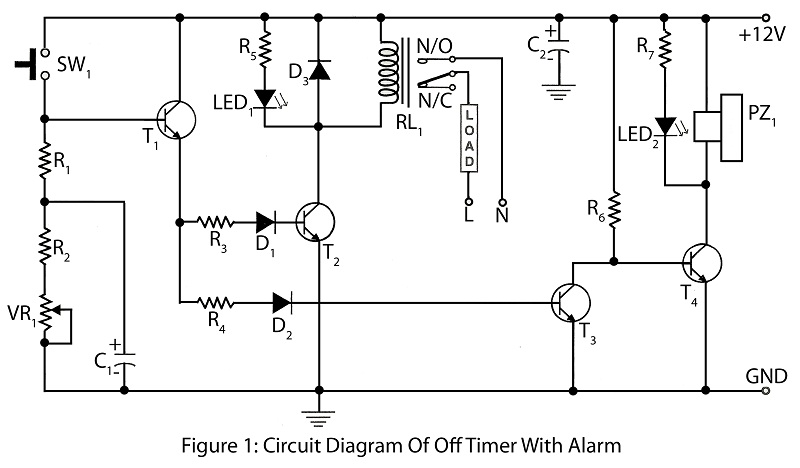
Latching burglar alarm

When the protective circuit is interrupted (opened), the alarm sounds. To set the circuit, adjust R2 (with the protective circuit open) for 1 V across R1.
The described circuit functions as a protective alarm system that activates when the integrity of the circuit is compromised. This system includes a resistor R1, which is part of the voltage sensing mechanism, and a variable resistor R2, which is used for calibration.
Upon interruption of the protective circuit, a signal is generated that triggers an alarm. This alarm serves as a warning mechanism to indicate that the circuit has been opened, which may signify a fault or unauthorized access. The alarm can be an audible signal, such as a buzzer or speaker, that alerts nearby personnel to the condition.
For proper calibration of the circuit, R2 must be adjusted while the protective circuit is open to achieve a voltage of 1 V across R1. This adjustment ensures that the circuit operates within the desired parameters, allowing for accurate detection of any interruptions. The resistance values of R1 and R2 should be selected based on the overall design requirements, including the expected voltage range and the characteristics of the alarm system.
In practical applications, the circuit may also include additional components such as diodes for protection against reverse polarity or transient voltages, capacitors for noise filtering, and possibly a microcontroller for more sophisticated monitoring and control functions. The layout of the circuit should ensure minimal interference and reliable operation under varying environmental conditions.
Overall, this protective circuit design is crucial for applications requiring security and monitoring, ensuring that any unauthorized access or faults are promptly detected and communicated through an alarm system.When the protective circuit is interrupted (opened), the alarm sounds To set the circuit, adjust R2 (with protective circuit open) for 1 V across Rl.
The described circuit functions as a protective alarm system that activates when the integrity of the circuit is compromised. This system includes a resistor R1, which is part of the voltage sensing mechanism, and a variable resistor R2, which is used for calibration.
Upon interruption of the protective circuit, a signal is generated that triggers an alarm. This alarm serves as a warning mechanism to indicate that the circuit has been opened, which may signify a fault or unauthorized access. The alarm can be an audible signal, such as a buzzer or speaker, that alerts nearby personnel to the condition.
For proper calibration of the circuit, R2 must be adjusted while the protective circuit is open to achieve a voltage of 1 V across R1. This adjustment ensures that the circuit operates within the desired parameters, allowing for accurate detection of any interruptions. The resistance values of R1 and R2 should be selected based on the overall design requirements, including the expected voltage range and the characteristics of the alarm system.
In practical applications, the circuit may also include additional components such as diodes for protection against reverse polarity or transient voltages, capacitors for noise filtering, and possibly a microcontroller for more sophisticated monitoring and control functions. The layout of the circuit should ensure minimal interference and reliable operation under varying environmental conditions.
Overall, this protective circuit design is crucial for applications requiring security and monitoring, ensuring that any unauthorized access or faults are promptly detected and communicated through an alarm system.When the protective circuit is interrupted (opened), the alarm sounds To set the circuit, adjust R2 (with protective circuit open) for 1 V across Rl.





